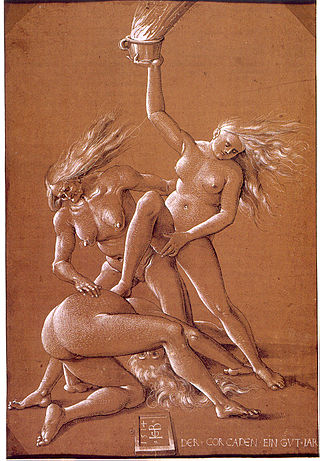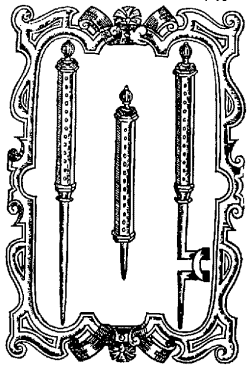History
Witch-hunting in India is an ancient practice spanning back many centuries with references to dayans (witches) being found in several early Sanskrit works. However, unlike the witch trials in Early Modern Europe and Colonial America, where victims were tried and recorded by state-run judiciaries, detailed records of witch hunts in India are difficult to find as many hunts were mob-instigated, unofficial incidents that were publicly tried. For this reason, there is no concrete documented evidence of witch-hunting in India before the Santhal witch trials of 1792 and the majority of witch-hunting cases are found in information from the colonial period. [8] [9]
Witch hunting in colonial India
In 19th-century Colonial India, many cases of witch hunting were recorded and officials speculated that during this period over a thousand women were killed on the grounds of witchcraft in India's central plains alone. It was also believed that more women were killed as witches than those who died through the practice of Sati. [9] Witches (also known as dakinis or dayans), were usually identified by male practitioners of magic and spiritual leaders. These witch hunters known as 'bohpas', 'bahgats' and other names, were consulted after members of the community, their relatives or the leaders of villages complained of suffering misfortunes caused by witchcraft. [10] [11] Once a 'witch' was identified, bohpas would attempt to 'free' the victim from her power, by using magic, exorcism, torture and execution. For example, a popular method of torture in Western India was 'witch-swinging', where an accused witch would have chilli paste rubbed into her eyes, was hung upside-down from a tree and swung over an open fire until she confessed to her crimes or promised to release her victim(s). [10] In one case in 1886 an elderly woman called Kunkoo was accused of inflicting illness on a soldier's wife, she was made to put her hands in boiling oil and swung for days before being released and eventually murdered. [11]
Bans on witch-hunting
British authorities implemented several bans on witch-killing between the 1840s and 60s throughout Eastern India. The bans targeted spiritual leaders and holy men who named and accused witches in their villages. In serious cases punishments for hunters could even lead to a death sentence. [10]
Initially, the bans seemed to be effective and were living up to their aim of reducing the number of witch hunts. Women accused of witchcraft and their families were given more resources and opportunities to seek support, compensation and justice. Bhopas were also dissuaded from labelling certain women as witches and carrying out more brutal forms of punishment on the accused. [10] However, hunts continued regardless of new laws, in more inconspicuous and less violent forms. The British failed to acknowledge how deeply embedded witchcraft beliefs were in tribal societies and instead of stopping witch hunts the bans drove the practice underground. [12] It did not help that many colonial officials, attempting to ease tensions and accommodate local traditions, were known to accept certain witch-hunting practices and were lenient towards perpetrators with some even attending witch-swingings. [10]
It is possible that the outlawing of witch-hunting inflamed the number of hunts, due to the hostile and resistant response legislation was met with. Firstly, many Indians opposed the trials of witch-killers, who were often influential men that played central roles in village life and, in the views of locals, were only trying to protect their communities from evil supernatural forces. Additionally, after the passing of witch-hunting bans, reasons to hunt 'dayans' expanded beyond land-grabbing and a way of gaining retribution for misfortunes and arguably transitioned into a form of resisting colonialist rule. For instance, witches became a symbol of colonial power and who many believed had been 'protected' by new British laws, therefore the practice of witch-hunting became an indirect form of expressing hostility towards colonial power. [12] [13]
1855 Santhal Rebellion and 1857 Indian Rebellion

Mass incidents of witch-hunting often coincided with major rebellions in British India, further supporting the notion that witch-hunts represented a mode of resistance against colonial rule. [12] For example, in the 1855 Santhal Rebellion, large numbers of women were persecuted by Santhal leaders in the form of witchcraft accusations, despite playing active roles in the resistance. [14]
Similarly, in 1857 during the Indian Rebellion, a wave of witch hunts broke out across the region of Chota Nagpur. The rebellion provided an opportunity for rebel leaders to 'clean out' witches, whose numbers many suspected had risen under the 'benevolent power' of the British, leading to a surge in hunts across rebel-controlled regions. Witches in many ways came to symbolise British power and for this reason were killed by rebel leaders as a way of consolidating their religious and political power over the masses in times of major upheaval. [13]








